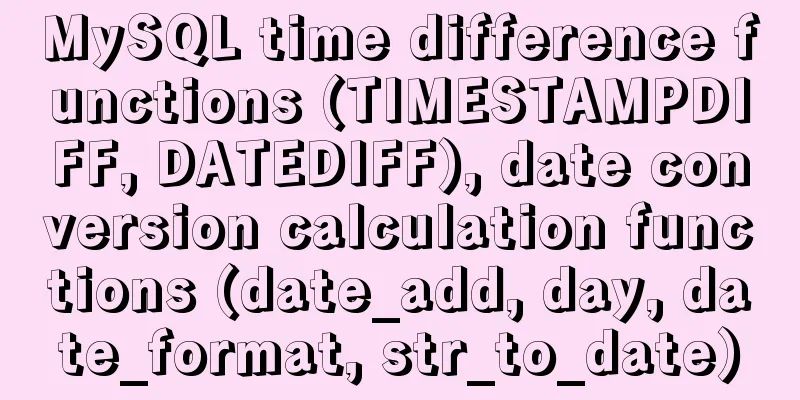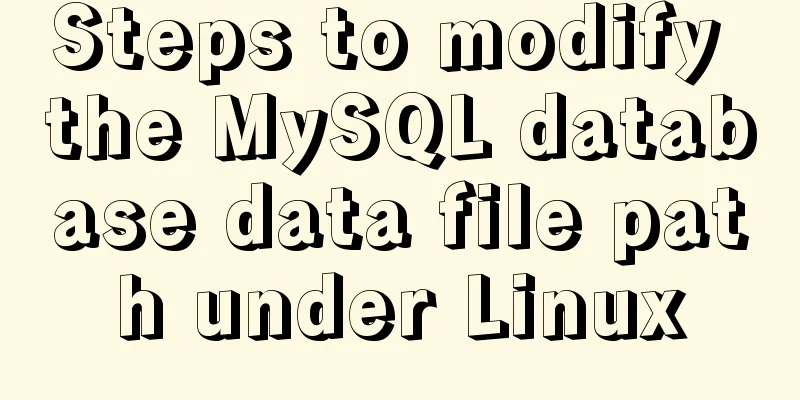MySQL 8.0.17 decompression version installation and configuration method graphic tutorial

|
I'll record the problems I encountered during the installation process, and I hope it will be useful to everyone. 1. Download (the official recommendation is to download and install the version, but the decompressed version is more convenient), download address:
2. To decompress, we need to add one more step: (1) Create a file named my.ini. Addendum: I created a data folder before, but the subsequent installation resulted in an error. Take this as a warning.
3. Modify the my.ini file: [mysql] # Set the default character set of the mysql client to default-character-set=utf8 [mysqld] # Set port 3306 port = 3306 # Set the installation directory of mysql basedir = D:\\Program Files\\mysql\\ # Set the storage directory of mysql database data datadir = D:\\Program Files\\mysql\\data # Maximum number of connections allowed max_connections=20 # The default character set used by the server is the 8-bit latin1 character set character-set-server=utf8 # The default storage engine that will be used when creating a new table default-storage-engine=INNODB # Create mode sql_mode = NO_ENGINE_SUBSTITUTION,STRICT_TRANS_TABLES Pay special attention to: (1) The directory D:\\Program Files\\mysql\\data must be “\\”. Do not use “\” or an error will be reported. Alternatively, you can use “/”. 4. Configure mysql environment variables:
Click Path and add:
5. Run cmd as an administrator and do the following: (1) Switch to the bin directory of mysql;
(3) Execute the mysqld --install command to install the mysqld service; (4) Execute the net start mysql command to start the MySQL service; (5) Execute the mysql -u root -p command to connect to the MySQL database and enter the randomly generated password above;
(6) Execute the following SQL to reset the root password: mysql> alter user 'root'@'localhost' identified with mysql_native_password by 'new password'; Tips:
Wonderful topic sharing: MySQL different versions installation tutorial MySQL 5.7 installation tutorials for various versions MySQL 5.6 installation tutorials for various versions mysql8.0 installation tutorials for various versions The above is the full content of this article. I hope it will be helpful for everyone’s study. I also hope that everyone will support 123WORDPRESS.COM. You may also be interested in:
|
<<: How to use the Linux nl command
>>: How to switch between Vue production and development environments and use filters
Recommend
How to implement responsiveness in Vue source code learning
Table of contents Preface 1. Key Elements of a Re...
Summary of Linux sftp command usage
sftp is the abbreviation of Secure File Transfer ...
Cross-origin image resource permissions (CORS enabled image)
The HTML specification document introduces the cr...
Master-slave synchronization configuration and read-write separation of MySQL database
The benefits of using MySQL master-slave replicat...
Html tips to make your code semantic
Html semantics seems to be a commonplace issue. G...
In-depth analysis of nginx+php-fpm service HTTP status code 502
One of our web projects has seen an increase in t...
How to allow all hosts to access mysql
1. Change the Host field value of a record in the...
Specific use of node.js global variables
Global Object All modules can be called global: r...
Docker network mode and configuration method
1. Docker Network Mode When docker run creates a ...
A brief analysis of the count tracking of a request in nginx
First, let me explain the application method. The...
Uninstalling MySQL database under Linux
How to uninstall MySQL database under Linux? The ...
MySQL5.6.31 winx64.zip installation and configuration tutorial
#1. Download # #2. Unzip to local and modify nece...
Form submission refresh page does not jump source code design
1. Design source code Copy code The code is as fol...
More popular and creative dark background web design examples
Dark background style page design is very popular...
Logrotate implements Catalina.out log rotation every two hours
1. Introduction to Logrotate tool Logrotate is a ...
















